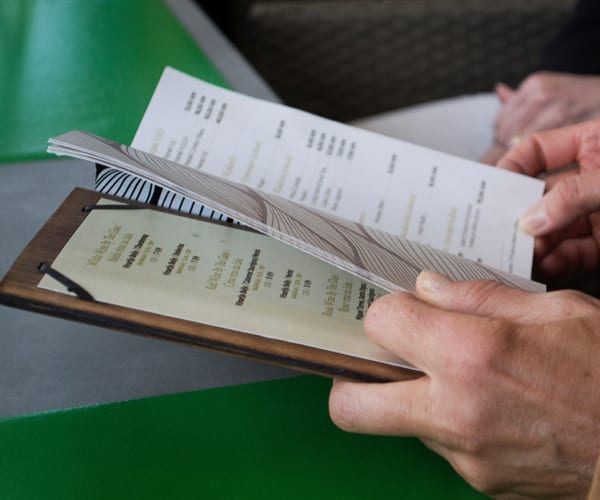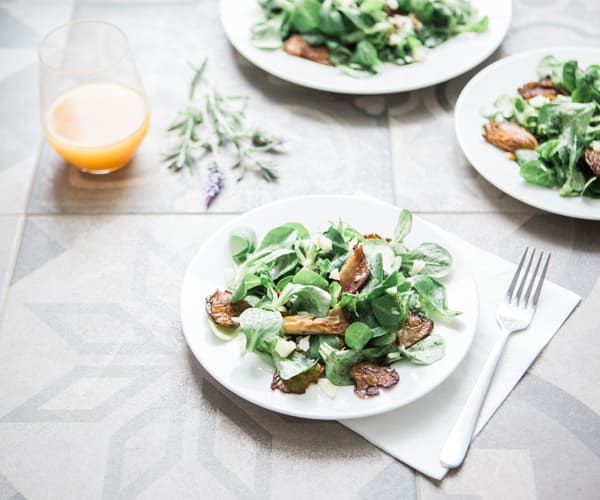Tips for Picking Healthy Foods When Eating Out

It can be easier to stick to your healthy eating plans when you’re at home. You make the effort to stock your kitchen with fresh, whole-food ingredients, and you use color-coded containers to keep your servings honest.
The trouble starts when you go out to eat.
Eating out can derail your healthy eating plan because it can be hard to practice moderation around a ginormous sizzling steak or mountain of thick-cut fries.
There is a middle ground, of course. Instead of throwing all caution to the wind when you’re dining out, these tips can help you eat out without overindulging.
12 Strategies for Choosing Healthy Foods to Lose Weight When You Dine Out
1. Scope the menu beforehand

Nowadays, it’s easy to see menus online, and, if not available, just call and ask the staff. Nothing is more annoying than settling into your seat only to find out the restaurant serves only beef burgers, pizza, and wings.
2. Take the lead in choosing restaurants
Let’s face it, we don’t necessarily pick our friends because of their fine taste in healthy restaurants!
If your BFFs are diehard greasy joint fans, you need to step up and steer them toward a few options that will work for you.
Select a place with variety if you and your pals have polar opposite food preferences. I find that most of my friends appreciate suggestions, especially if they’re busy and don’t want to make up their minds.
3. Don’t go hangry
Being short and snappy doesn’t just ruin relationships; it’s a sign that your hunger could be making you irrational. Preliminary research shows that ghrelin (aka the “hunger hormone”) can make you behave more impulsively.
You may end up devouring those bottomless fries even if deep down inside you know it’s not the best choice. Nip ghrelin in the bud by munching on a low calorie, satisfying snack before heading to the restaurant.
Simple options such as an apple, plain Greek yogurt, or roasted almonds should do the trick.
4. Resist the urge to order appetizers
Popular appetizers can be heavy hitters in the calorie category because they’re often deep-fried, thickly battered, smothered in sauce, or all three.
Just think about all the blooming onions, creamy spinach dips, and loaded jalapeno poppers from your previous dining experiences, and you’ll know what I’m talking about.
Even if your famished brain tells you otherwise, trust me when I say the main meal will be enough. If you’re anxious about whether what you ordered will be enough, keep the menu at the table; you can always order more later.
5. Pass on the bread basket
Some restaurants serve bread and butter or chips and salsa to keep patrons happy while waiting.
Tell the waiter you’d rather take a pass; don’t even let them get set on the table (unless one of your dining partners objects).
Not only will these well-intentioned freebies spoil your appetite, but they can also be a major source of empty calories if you graze mindlessly while chatting with friends.
6. Go halfsies with your meal
Thanks to the Menu Labeling Rule, all chain restaurants and some vending machines now display calorie info.
One thing we all already know: Restaurant portions are way too big. (Yes, we’re looking at all 1,400 calories of you, Outback 16-ounce Prime Rib.)
Even non-chain restaurants serve up more than you need. A recent study surveying the calorie count on 157 meals from small-chain, independent restaurants found the average meal was 1,300 calories!
Long story short: Either share your meal with a friend or pack up half for later.
7. Don’t drink your calories
Since you’re eating calories, you don’t need to be drinking a bunch of them, too. Water or unsweetened tea should be your main squeeze, not soda or a racy margarita.
Of course, if you’ve planned ahead and saved those yellows for a bit of wine, have fun and enjoy by all means.
Just keep in mind that liquid calories don’t do much to make you feel fuller, and can actually trigger cravings and loosen inhibitions, leading to an increase in overall consumption.
8. Choose the right type of salad

Ordering salad may not feel like a good value financially, but if you want to clean up your eating habits, try to overcome this mentality.
A nutrient-dense option like a veggie-packed salad is a solid strategy for healthy eating. On that note, ask for dressing on the side. Eating lettuce doused in ranch can be just as caloric as any other meal you could order.
Steer clear of toppings such as fried chow mein noodles, breaded and deep-fried proteins, candied nuts, and crouton overload.
Boost your bowl full of greens with some lean protein (grilled chicken, wild salmon, and tempeh are great picks) or a sprinkle of healthy fats (try almonds, sunflower seeds, or ¼ of an avocado) to make it more balanced and satisfying.
9. Lean on veggie-heavy sides
Sides can be a blessing or a curse, depending on what you order. Most restaurants have a variety of side dishes including french fries, dinner rolls, mashed potatoes, rice, coleslaw, roasted or grilled veggies, etc.
Pick as many non-starchy (aka, non-potato base) vegetable sides as possible, and ask if the kitchen staff can go easy on the butter, oil, or sauce.
Ask the kitchen to serve up a side of veggies steamed or lightly sauteed in olive oil.
10. Pay attention to cooking buzzwords on menus
How a food is cooked matters just as much as what that food is. For example, deep-frying potatoes adds almost two times as many calories as baking them does. Make the comparison yourself:
- 100 grams french fries = 289 calories, 14 grams fat, 37 grams carbs, 3.5 grams protein
- 100 grams baked potato = 97 calories, 0 grams fat, 21 grams carbs, 2.6 grams protein
To help you decipher the restaurant’s menu, be mindful of the buzzwords the American Heart Association want you to keep an eye on:
- AVOID: au gratin, fried, scalloped, crispy, pan-fried, buttered, creamed, stuffed
- SELECT: steamed, broiled, baked, poached, roasted, grilled
11. Chew slowly and savor the company
Experts from Harvard Medical School believe that it takes 20 minutes before your brain registers the “I’m full” signal from your stomach.
Eating slowly and chewing your food thoroughly can aid in digestion and prevent you from overeating.
On a social level, rushing through the meal can deprive you of the joy of eating and being with the ones you love.
12. Eliminate the “clean-your-plate” mentality
Ever been scolded by a penny-pinching parent for not cleaning your plate?
This can be especially problematic if you sometimes struggle to stuff down every last bite from a restaurant portion that was too big to begin with.
Either pack up the extra food to take home, or learn to be OK with leaving a few nibbles on the plate.
